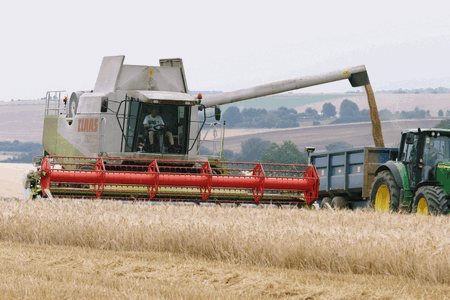Only one out-and-out feed spring barley

Like the new winter malting barley, spring type Scout from Nickerson is very susceptible to yellow rust (rated 2) and so merits only specific recommendation – as a feed variety for the north-east region.
“It couldn’t be considered for full recommendation,” says Mr Hanson.
However, it matches Waggon for treated yield and has outperformed that variety in north-east trials.
“It’s short and stiff and has good resistance to brackling.”
Its mildew and brown rust resistances are good. “But its five for rhynchosporium is really as low as you want to go.”

The three other newcomers, all fully recommended, are also short and stiff, he notes.
Jolika and Sweeney, both from New Farm Crops, are potential brewing types, and Nickerson’s Belgravia is aimed at the distilling market.
Sweeney, which yields only just less than Quench overall and has bettered it in the east, is still under IBD tests but looks to have Tipple-type malting quality, according to Mr Hanson.
“We think it has the same sort of quality as varieties like Tipple, Cocktail and Optic that have been around for the past few years. It’s the standard type that the industry knows and loves.”
Sweeney is top rated for mildew and brown rust resistance. “But it’s a bit weak for yellow rust.”
By contrast Jolika’s quality seems more akin to Cellar’s, offering higher hot water extract and low beta-glucan, both characteristics which maltsters regard highly, according to Mr Hanson.
“They tell me that it’s likely that Jolika will be a better bet to meet some of their requirements than the Tipple types.”
Jolika matches Tipple for yield, has good mildew resistance and is “pretty good” against rhynchosporium. But its brown rust resistance at four is low, he warns.
Belgravia, like Appaloosa which it matches for yield, is a low glucosidic nitrile (GN) variety of the type favoured by the Scotch Whisky Association for distilling.
It may also have potential in the smaller grain distilling market which currently uses the much lower-yielding Decanter, notes Mr Hanson.
Its only moderate brown rust resistance should not be a problem in the areas likely to be growing it, and its rhynchosporium resistance rating of 7 should be of particular interest to Scottish growers, he suggests.
Chalice, Kirsty, Power, Spire and Troon are no longer listed.
Go back to the landing page: |


